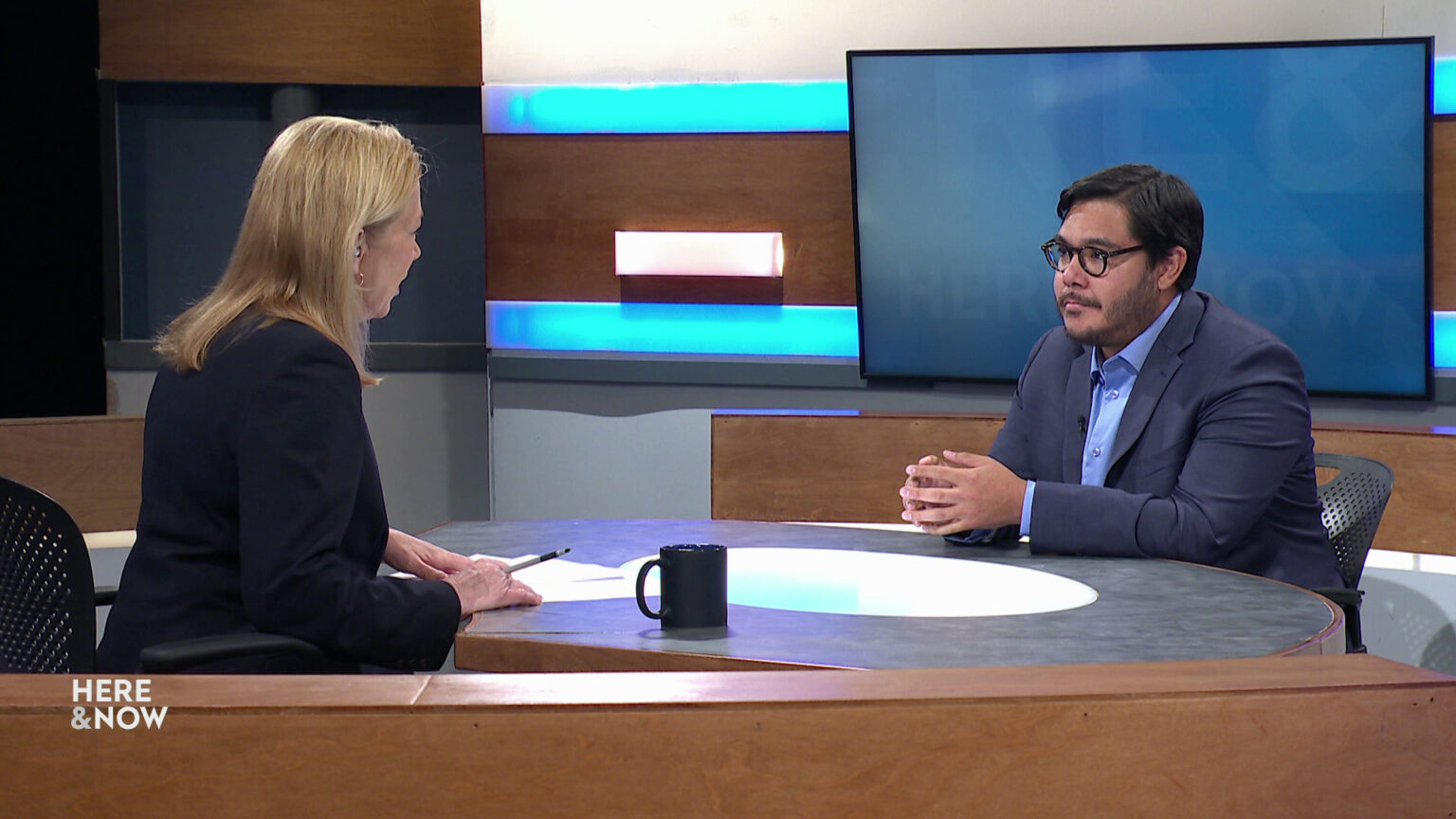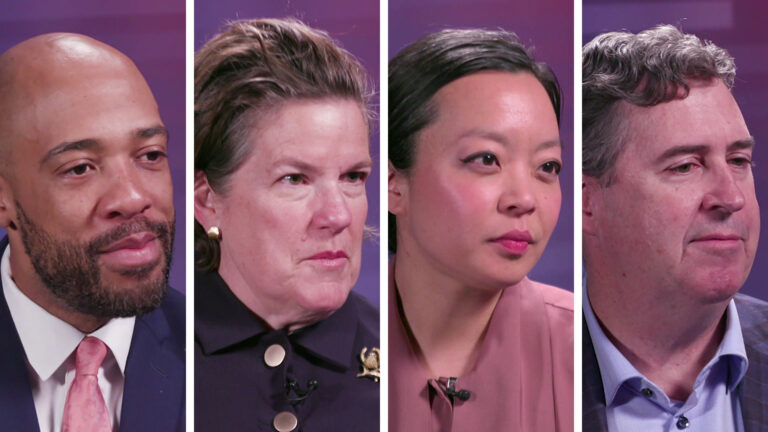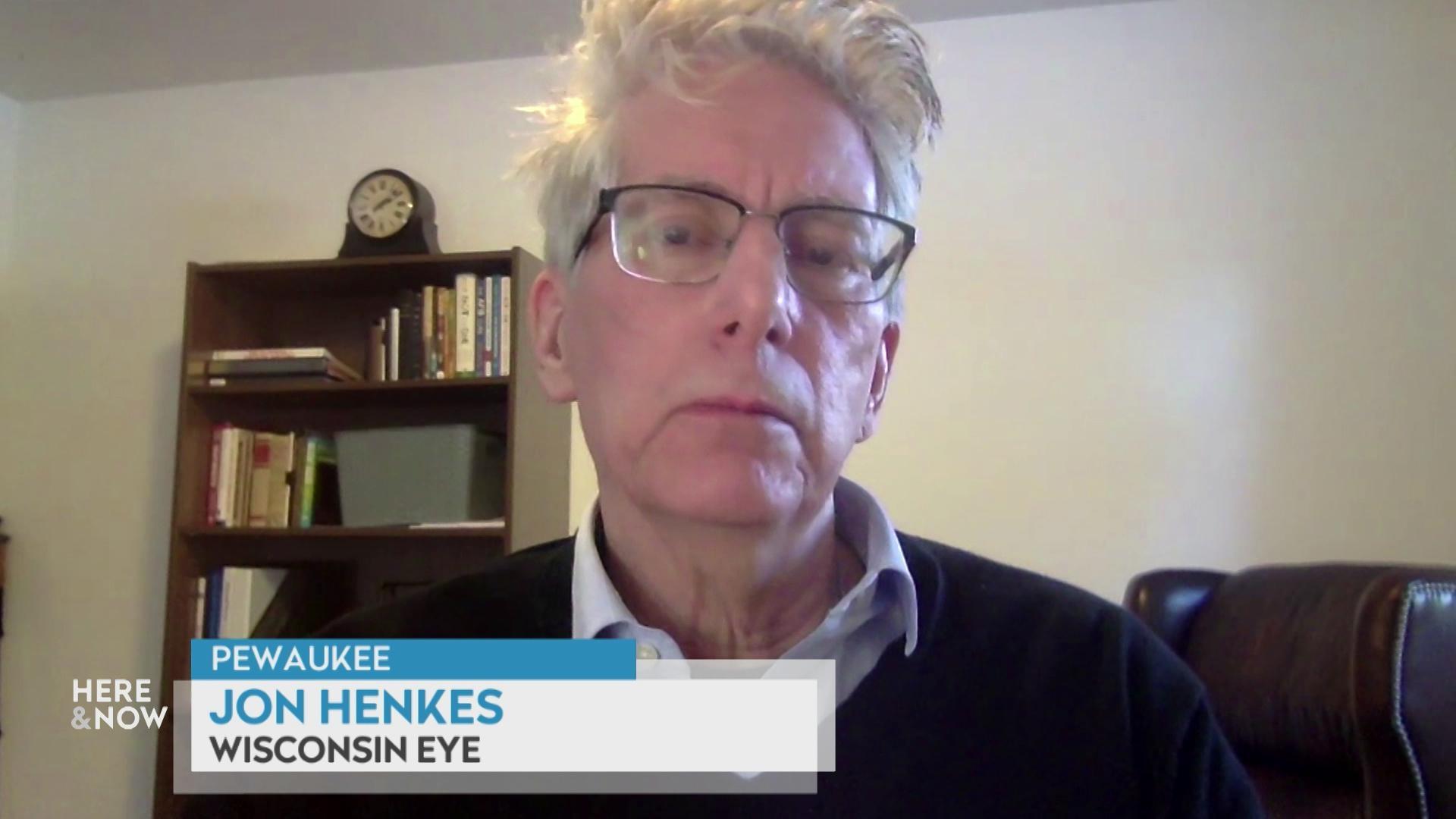'Here & Now' Highlights: Christopher Saldaña, Jorge Franco, Kathryn McGarr
Here's what guests on the Nov. 15, 2024 episode said about education funding at state and federal levels, the Hispanic vote for president and parallels in American history to Trump campaign promises.
By Frederica Freyberg | Here & Now
November 18, 2024

Frederica Freyberg and Christopher Saldaña (Credit: PBS Wisconsin)
The Wisconsin Department of Public Instruction’s proposed 2025-27 budget would pump another $4 billion into K-12 while the U.S. Department of Education is being targeted by the incoming second Trump administration — UW-Madison education professor Christopher Saldaña reacted to both prospects. The Hispanic vote in Wisconsin and nationally grew in favor of President-elect Donald Trump, and Hispanic Chamber of Commerce of Wisconsin CEO Jorge Franco described key drivers of that growth. UW-Madison journalism professor and historian Kathryn McGarr said there are parallels in American history to current political themes, particularly citing the “America First” movement in the mid 20th century and Trump’s “Make America Great Again” movement.
Christopher Saldaña
Professor, UW-Madison School of Education
- The superintendent of Wisconsin’s public K-12 schools issued a proposed budget for the 2025-27 biennium that would spend $4 billion and fund special education costs to districts at a 90% level, compared to the current 32.5% level. That proposal comes even as voters approved a record $4.4 billion in local school funding for referendums in 2024. A professor of K-12 educational leadership and policy analysis, Saldaña called it a “great proposal” that would ensure and fund the education of all children in the state. At the national level, President-elect Donald Trump has called to shut down the U.S. Department of Education, which administers many programs that affect states – including federal student loans. Hundreds of millions of dollars pass to Wisconsin from the agency’s funds, and Saldana said he could not predict the implications of eliminating the agency.
- Saldaña: “What would happen, I think, is unclear because of the programs that the Department of Education has. They administer funding for students in poverty. They administer funding for students with disabilities. They ensure that those students aren’t discriminated against. And then they provide a ton of research for education, which is really the innovation wing of our country’s educational system. But it’s very unclear what abolishing the Department of Education means. Does it mean no more funding for students in poverty, no more oversight of discrimination? Or is it really a reallocation of those responsibilities in the administration of those funds to different agencies?”
v
Jorge Franco
CEO, Hispanic Chamber of Commerce of Wisconsin
- Surveys found Latino voters cast more ballots for President-elect Donald Trump in 2024 than they did in the 2020 or 2016 elections. Vice President Kamala Harris won a majority of these voters overall, but Trump made major gains, particularly in Florida and Texas. Franco said he was not surprised by this shift that helped tip the election to Trump.
- Franco: “There were a lot of rumblings already. A big concern for Hispanic voters certainly was the economy, the inflation that was in some cases just staggering. I think that having lived that for numerous years, I think just drove many people to support former President Trump, now President-elect Trump. And, of course, his numbers show it in all segments, not just the Hispanic vote. So that was in particular — those of us who work in the low-income community and community development — the pain factor is pretty high. I think people are looking for a new day and that’s it. The outcomes spoke for themselves.”
Kathryn McGarr
Professor, UW-MadisonSchool of Journalism and Mass Communication
- How does President-elect Donald Trump “Make America Great Again”? There are certainly sign posts — beginning with his promises of mass deportations, tariffs and an “America First” policy, like not wanting the U.S. to support Ukraine’s war effort. And how does this MAGA movement align with days of yore? McGarr cited examples from the internment of Japanese Americans in World War II to the post-war “Second Red Scare,” promoted by Wisconsin Republican U.S. Senator Joe McCarthy and the simultaneous “Lavender Scare” – especially as Trump said on the campaign trail he wanted to rout out the “enemy from within.”
- McGarr: “So it’s really about any kind of subversion, political subversion, or at the time what was considered sexual subversion. Now, Donald Trump has specifically mentioned Marxists and communists — he talks about that a lot. He talks about journalists as enemies of the state. And while I don’t think there would be a repeat of the ‘Lavender Scare,’ he certainly considers trans people to be enemies of the state. And so I think we often see these parallels between sort of political subversion and subversion of what is considered traditional gender roles.”
Watch new episodes of Here & Now at 7:30 p.m. on Fridays.
 Passport
Passport











Follow Us